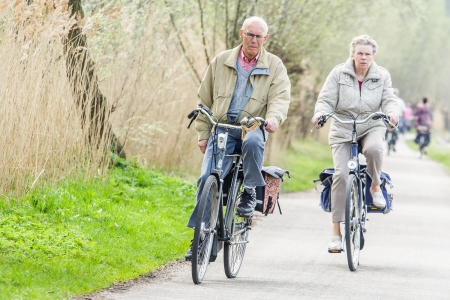The number of seriously injured cyclists in the Netherlands is increasing: more than half of all serious road injuries are cyclists. More than 80% of these seriously injured cyclists are the result of crashes in which no motorized vehicle is involved. Little is known about the circumstances in which these single-bicycle or bicycle-bicycle crashes occur, as only 4% are registered by the police.
Therefore, the SWOV-team for in-depth study gathered detailed information on 41 single-bicycle and bicycle-bicycle crashes to gain insight into the factors and circumstances that influence the occurrence and consequences of these crashes. As the over-50s have a large share in the number of cyclist-only crashes, the study focused on this group.
Contributing factors that played a role in a large number of crashes were the behaviour of another road user, distraction and narrow cycling facilities or traffic lanes. However, which factors played a role in the occurrence of a crash depended on the type of crash.
Crash types
The in-depth study identified eight crash types:
- Cyclist loses balance while riding or stopping and dismounting on a slope;
- Cyclist veers off course unintentionally and hits the kerb or runs off the road;
- Cyclist encounters unexpected road furniture (e.g. bollard) on the bicycle track or carriageway;
- Distracted cyclist veers off course and collides with oncoming traffic or runs off the road;
- Cyclist underestimates the complexity of the traffic situation;
- Cyclist does not give or is not given right of way in a traffic situation with restricted sight distance;
- Cyclists misunderstand each other’s intentions while overtaking;
- Cyclist ends up in an unforeseeable situation that was created by someone who was not taking part in traffic.
In addition to the crash types, the SWOV-team for in-depth study identified specific groups of cyclists that are involved more often in specific crash types. The oldest group of cyclists (over-75s) fall off their bicycle more often than the youngest age group (aged 50–74) and distraction was more common in younger male cyclists riding a racing bike. Another crash type in which riders of a racing bike were overrepresented occurs when two cyclists meet at an intersection with a restricted sight distance and one has to give right of way to the other.
An article on the details of the in-depth study, the methods used, and more of the findings has recently been published in Accident Analysis & Prevention.

